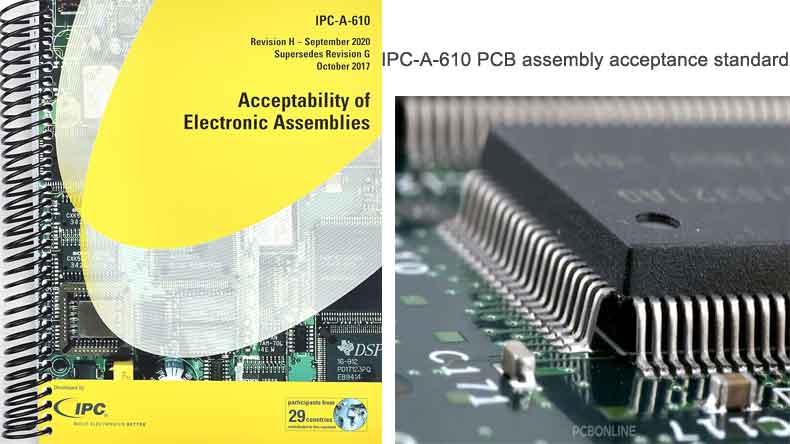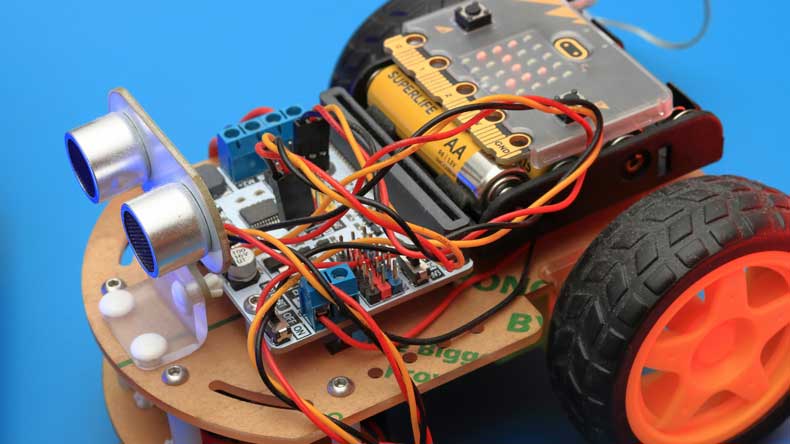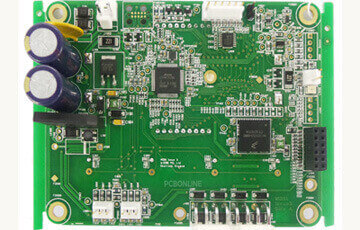
When considering the attributes of a "Good" electronics assembly, what are the typical criteria that come to your mind? The functionality along with the intended purpose of the printed circuit board assembly? Surely, it implies a certain level of acceptability.
Crafting a Printed Circuit Board Assembly(PCBA) is unexpectedly complex. Within this complexity exists a significant range where the final PCBA can fall into categories of "good", "bad", or somewhere in between. This means determining the quality of electronic circuit assembly is an intricate task. For this purpose, the IPC standards are the most important and most commonly applied standards to the design process of electronic assembly.
In this article, we will comprehensively explore the IPC standard for PCB Assemblyacceptability, examining its various classes and practical applications!
What is IPC-A-610 as PCB Assembly Standard
IPC-A-610 is a widely recognized standard in the electronics industry. It sets the acceptance criteria for the Printed Circuit Board Assembly (PCBA).

The Institute of Printed Circuits (IPC) has developed this standard to provide a clear criterion for electronic assembly evaluation.
The classification depends on the end-use application of the electronic assembly, with Class 3 having the highest standards and requirements.
The PCB assembly IPC-A-610 standard serves as a valuable reference for quality assurance and inspection processes in the electronics manufacturing industry. Adhering to IPC-A-610 standards helps enhance the overall quality of electronic assemblies and promotes industry-wide consistency.
IPC-A-610 Class 1
Class 1 of the IPC-A-610 standards is the lowest of the Classes, and so the most 'lenient' when it comes to making allowances for potential defects. The products of Class 1, are most likely to be manufactured to very tight margins (read "as cheaply as possible"). As long as the item still functions as expected within an acceptable time frame, then that's probably going to be sufficient.
The IPC-A-610 Class 1 electronics falls under the umbrella of "general electronics". These electronic products are characterized by the least stringent quality requirements. These products typically feature items with a relatively short expected lifespan.
As discussed above, the IPC-A-610 Class 1 is associated with general electronic products where the emphasis is on functionality rather than stringent reliability requirements. Some examples of applications for IPC-A-610 Class 1 electronic assemblies include:

- Simple electronic devices such as promotional gadgets, novelty items, or toys.
- Everyday items with basic electronic components like low-cost remote controls, basic LED displays, etc.
- Electronic kits designed for educational purposes
IPC-A-610 Class 2
Class 2 of IPC-A-610 is commonly sought after for non-critical electronic assemblies where a long lifespan is preferred, though not crucial. Class 2 permits a degree of imperfection. For instance, surface mount components that are slightly misaligned, known as being 'off pad,' are generally acceptable in terms of electrical and mechanical functionality, even if they may not meet aesthetic standards.
IPC-A-610 Class 2 applications cover a broad spectrum of electronic devices that require sustained performance and an extended life cycle, though uninterrupted service is desirable but not deemed critical.
Examples of applications falling under IPC-A-610 Class 2 include:
- Consumer-grade televisions
- Electronic components used in air conditioning units
- Consumer tablets designed for regular use
IPC-A-610 Class 2 is generally associated with consumer electronics and other products where failure is undesirable, but wouldn't pose significant safety risks.
PCBA Application example of IPC-A-610 Class 2 standard

This is an access control PCBA for smart door locks assembled by the PCBA manufacturer PCBONLINE. Its acceptance standard is IPC-A-610 Class 2. Though it is a consumer electronic assembly, it has a flexible sensor PCB module, and its SMT soldering is fine-pitch, making the electronic assembly quite advanced.
IPC-A-610 Class 3
The most rigorous standard among the IPC classes is Class 3, necessitating adherence to all IPC criteria for an electronic assembly. This encompasses considerations such as laminate selection, plating thickness, material qualifications, manufacturing processes, and inspection. Typically, the Class 3 standard is tailored for more critical PCBAs.
The Class 3 electronics are typically of the utmost quality. Many OEM (original equipment manufacturer) products that could meet the criteria for Class 2 often choose the IPC Class 3 standard. This is because the advantages of employing higher-quality electronics outweigh the associated costs of additional testing and inspection.
Some examples of applications and products that fall under the IPC-A-610 Class 3 category include:
- Electronic components used in spacecraft, satellites, and aircraft
- Electronic assemblies for medical equipment
- Electronics used in defense systems, radar systems, communication equipment
- High-reliability electronic components used in communication infrastructure
- Electronic systems in vehicles
IPC-A-610 Class 3 is essentially reserved for applications where the highest level of reliability and performance is required.
PCBA Application example of IPC-A-610 Class 3 standard.

This is a control main board PCBA for automotive wireless wireless communication assembled by PCBONLINE. Its PCB assembly acceptance standard, undoubtedly, is IPC-A-61p Class 3. In automotive electronics, whether it is a traditional car or an electric vehicle, this control board PCBA has the highest standard requirements for reliability and quality. This is because it involves driving safety.
IPC-A-610 Class 1 vs Class 2 vs Class 3
While Class 1 electronics typically encompass inexpensive and readily replaceable items, Class 2 electronics hold greater importance with a requirement for an extended life cycle, and Class 3 electronics represent mission-critical components.
Whether it involves a pacemaker or a military radar, a product necessitating compliance with IPC Class 3 standards must utilize high-reliability electronic components to guarantee uninterrupted service.
Distinguishing between IPC Class 2 and 3 is crucial for companies providing electronics manufacturing services. The primary distinction lies in the precision of placement and soldering of Surface Mount Technology (SMT) and Through-Hole Technology (THT) components. IPC Class 3 demands higher purity in assembly compared to IPC Class 2, necessitating meticulous attention to all manufacturing aspects and factors.
Several factors should be considered when choosing a particular IPC class. The ultimate function of the product is paramount here. In some scenarios, Class 1 standards would suffice but in others, it is crucial to opt between the IPC Class 2 and 3. For example, PCBONLINE fabricated and assembled the double-sided LED pointing lights installed on the side of the highway. As their working stability is related to traffic safety, the acceptance standard for LED PCB assembly is Class 3.
A summary of the three IPC-A -610 classes in the form of a table is given below:
|
|
Description
|
Life Span
|
Quality Requirement
|
Examples
|
|
IPC Class 1
|
General electronics
|
Short
|
Cheap
|
Toys, flashlight
|
|
IPC Class 2
|
Dedicated service electronics
|
Long
|
Good
|
Laptops, microwaves
|
|
IPC Class 3
|
High-reliability electronics
|
Very long
|
Fail-proof
|
Aerospace, military, & medical applications
|
Extended Reading: IPC-A-600 for PCB Fabrication
IPC-A-610 sets the criteria for the acceptance of electronic assemblies, including PCBs, during the assembly process. It provides visual criteria to ensure the quality and reliability of the electronic assembly.
IPC-A-600, on the other hand, is focused on the acceptance criteria for the fabrication of bare PCBs before they undergo the assembly process. It outlines the requirements for the fabrication of bare boards, including materials, design, and workmanship. This standard is relevant during the fabrication phase, ensuring that the initial PCB board meets the specified requirements before components are assembled onto it.
In summary, while IPC-A-610 concentrates on the acceptance criteria for the assembly of electronic products, IPC-A-600 deals with the acceptance criteria for the fabrication of bare PCBs before assembly. Together, these standards contribute to maintaining quality and reliability throughout the entire lifecycle of electronic products.
Advanced PCB Assembly Manufacturer Certified with IPC-A-610 Class 2/3
If you are looking are high-quality electronics assembly for middle and high-end applications, you can work with PCBONLINE, an advanced PCB assembly manufacturer certified with IPC-A-610 Class 2/3. PCBONLINE provides EMS (electronic manufacturing services) solutions, including R&D, PCB fabrication, PCB assembly, PCBA value-added, and box-build assembly.

Founded in 1999, PCBONLINE has two large advanced PCB manufacturing bases, one PCB assembly factory, a component warehouse, an R&D team, and hundreds of component supply channels around the world ensuring stable component supply.
PCB assembly at PCBONLINE is certified with IPC-A-610 Class 2/3.
PCB fabrication at PCBONLINE is certified with IPC-A-600 Class 2/3, corresponding to IPC-A-610 PCB assembly standards.
All the PCB assembly materials and manufacturing processes are high-quality and traceable.
Besides IPC-A-610 Class 2/3, PCB assembly at PCBONLINE is certified with ISO 9001:2015, 9001:2016, IATF 16949, RoHS, REACH, and UL.
The professionals at PCBONLINE provide one-on-one engineering support and free DFM, DFA, DFT, and DFX to ensure the PCB assembly is certified with ICP-A-610 Class 2/3.
Since the foundation of the EMS PCB assembly factory in 2010, PCBONLINE has provided PCB assembly certified with IPC-A-610 Class 2/3 for all possible middle and high-end applications. These applications include servers, bitcoin miners, high-power stage lights, 1000-lumen ship lights, wall-breaking machines, flexible miner hat lamps, projectors, false eyelash UV disinfection boxes, lithium battery cell contact systems for EVs, traffic HD surveillance cameras, etc. If you need high-quality PCB assembly with the acceptance standard of IPC-A-610 Class 2 and 3, you can send your requirements to PCBONLINE by email at info@pcbonline.com.
Conclusion
IPC-A-610 is the most widely used electronics assembly standard in the world and includes Class 1, Class 2, and Class 3 according to different reliability requirements of applications. PCBONLINE is a one-stop PCB assembly manufacturer certified with IPC-A-610 Class 2/3. If you need high-quality electronics assembly, talk to PCBONLINE from the online chat window.
PCB assembly at PCBONLINE.pdf








